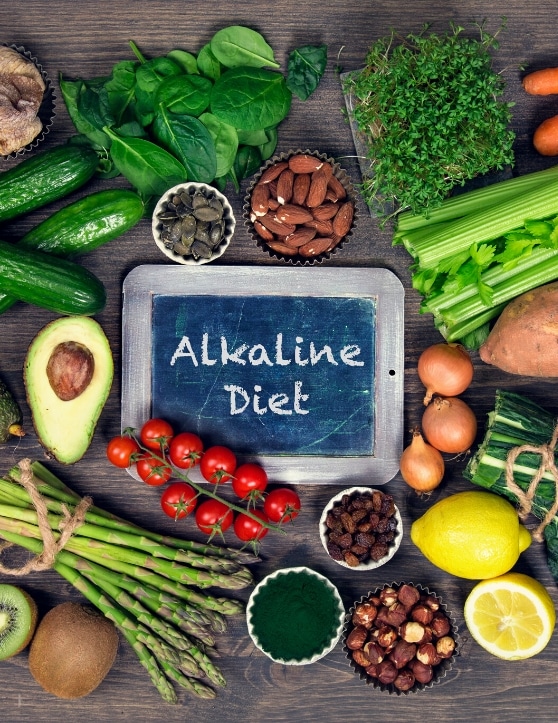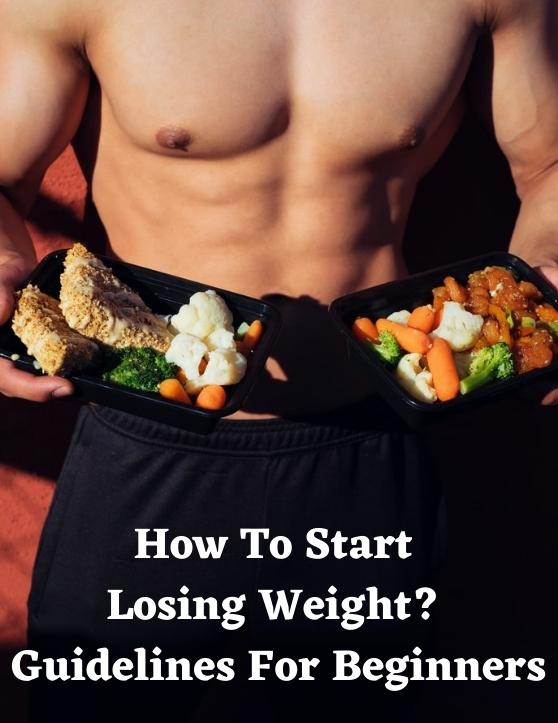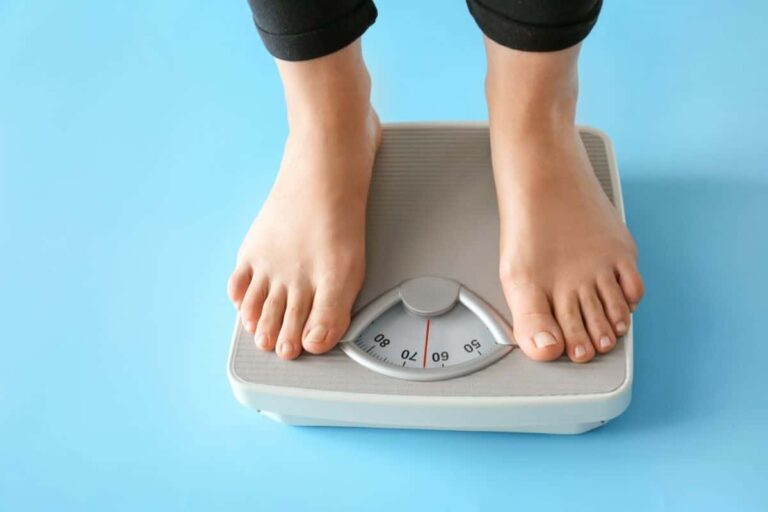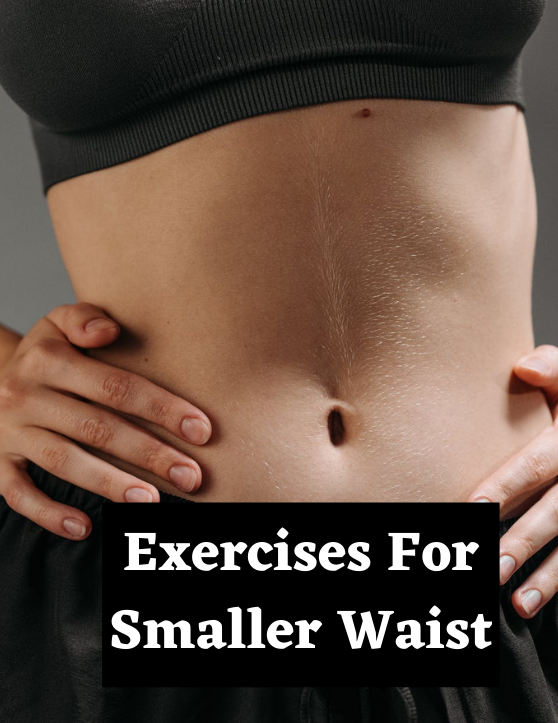What Diet Is Best for Me – Here’s How to Find Out

Confused as to which diet plan will work best for you? With so many popular diets available, it is difficult to select just one. Before embarking on any diet, it is not enough to just look for something that will garner results. It needs to be feasible, allow you to stick with it, and be nutritionally safe, too. While some diets provide quick results, they sometimes come at a cost.
What You Need to Understand

Not all diets on the market are completely safe. You may see quick results, but over the long term, they either aren’t sustainable or are unhealthy. The goal of any diet plan should be to train you to eat properly, consume food in moderate amounts, and introduce you to a healthy lifestyle.
The challenge in life that many people have is that we either never learned how to eat healthily or have an emotional cause for our overeating. A good plan will teach you how to eat and tackle behavioral issues. You can learn to eat healthily; however, if there are eating behavior issues, you may go off the diet before achieving your weight loss goals.
Furthermore, you need to enter it with the mindset that you may have days when you miss the mark. It happens to the best of us. The key is that when you make a mistake, learn that it doesn’t mean that you failed, are a failure, or are doomed. A mistake is just an error in judgment.
If it feels like you failed, then take that and use it to your benefit. You are only in trouble if you give up and don’t learn from the experience. If you remain teachable, learn what went wrong and why; then you are learning. You are putting yourself in a much better position the next time you are tempted, so you can move forward.
Tomorrow is another day with another opportunity. Seize the opportunity and move forward. Don’t begin your day looking back at what you can’t change.
Questions to Ask Yourself Before Selecting a Diet

There are many questions that you need to consider before selecting a plan. You should fully explore each question as it will help you eliminate those that will not benefit you, those that are unsafe, and those that can potentially damage your overall health. Not all diets are for everyone. It is important to know your body.
- What is your overall goal? Before finding a plan, determine what your overall objective is. Is your goal to gain weight, tone muscle, build muscle, become healthier, lose weight, or bulk up? You also need to know why you are doing this. The answer to this question is your motivator. Once you identify a fitness goal, a diet is easier to find.
- Are there any health concerns? Some diet plans can be harmful if you have an underlying health condition like high blood pressure, diabetes, heart disease, or an eating disorder. An example may be the keto diet which focuses on proteins and fats. Keto is not a good idea if you have high blood pressure as you should avoid salty and fatty foods.
- What is your dietary preference? If you have chosen a vegan or vegetarian lifestyle, you will benefit from a diet containing plant-based suggestions in line with your convictions or lifestyle. The same goes for those with food allergies.
- Can you sustain the diet over the long term? To stick to your diet, you need to be able to continue doing it after you lose the weight. Many diets fall short in this area, and people regain the weight. Many fad diets are unrealistic and too rigid. Sustainable diets are not so restrictive that they hamper your life.
- What are the health risks? This is an important one in assessing diets. Some diets focus on one nutrient type too much, like fat. Others exclude or restrict certain nutrients altogether. Incredibly restrictive diets will place you at risk for nutritional deficiencies or other diseases. Even intermittent fasting can place you at risk for hypoglycemia.
- Is the diet expensive? To be sustainable, the diet must be in line with your budgetary goals. If you have a budget, you will find it frustrating to stick with a diet that contains exotic foods or expensive supplements.
- Is there a scientific backing? Check what scientific evidence supports the claims made by the diet. Many fads have disappeared because science has established they don’t work or are dangerous. Always do your research and seek the assistance of a nutritionist that can guide your journey.
Which Diet Is Best for Me?
As mentioned, numerous diets are available, all claiming that they are the best one for weight loss or that they are miraculous in some way over their competitors. While you may see results, sometimes they aren’t safe. You need to enter a plan knowing the risks associated with it and how your body will handle the changes you implement.
Balanced Diets
These diets are not as restrictive in food consumption and allow you to eat a variety of foods. They don't deprive the body of nutrients and tend to focus on maintaining overall good health.
Mediterranean Diet
Who is it best for? Those who want a heart-healthy, well-balanced lifestyle.
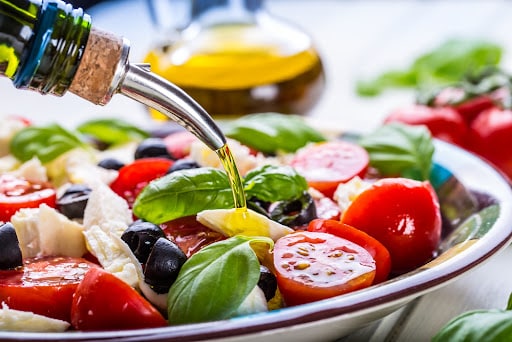
This plan promotes healthy eating. The Mediterranean diet is plant-based, plus it incorporates traditional cooking methods and flavors of the region. General intrigue about this diet began in the 1950s when experts noted that heart disease wasn’t as prevalent in Mediterranean countries as in the United States.
Since then, this diet has been confirmed to prevent stroke and heart disease.
The diet involves eating based on traditional Italian, Greek, and other Mediterranean cuisines. It incorporates plant-based foods like vegetables, whole grains, legumes, nuts, fruits, herbs, seeds, and spices. It also encourages olive oil, which is the primary source of added fat.
Seafood, fish, poultry, and dairy are consumed in moderation. Sweets and red meat are only occasionally consumed.
Dietary Approach to Stop Hypertension (DASH) Diet
Who is it best for? Those who suffer from high blood pressure, hypertension, heart disease, or stroke.
The DASH diet operates on the premise that high blood pressure can be lowered and prevented. It involves decreasing the amount of sodium consumed. The plan itself is rich in vegetables, fruits, milk products, fat-free or low-fat milk, whole grains, poultry, fish, seeds, beans, and nuts. It has fewer sweets, sweetened drinks, red meats, and added sugars than a typical diet.
This heart-healthy way of eating is lower in trans-fat, saturated fat, and cholesterol. It is also rich in nutrients that may lower your blood pressure, like fiber, protein, calcium, magnesium, and potassium.
Advantages:
- Flexible
- Incorporates a variety of food
- Great for brain and heart
- Easily sustainable
Disadvantages:
- Risk of eating too many calories which counters the effects of weight loss
- Since alcohol may be recommended, there is a tendency to binge drink
High Protein, Low Carb
This type of diet focuses more on meats and foods that are higher in protein. Most of them either eliminate carbs or significantly lower consumption.
Keto
Who is it best for? Those who want to lose weight quickly.

The keto diet is a low-carb plan that will result in ketosis. To obtain positive results, those on the plan eat very low levels of carbohydrates and include moderate protein levels and foods high in dietary fat. The keto diet depletes the body of carbohydrates and forces it to use fat stores for energy.
The “keto” in the ketogenic diet derives from the fact that it allows the body to produce smaller molecules of fuel – ketones. It is an alternative fuel source for your body. Its use comes into play when glucose (blood sugar) is in a depleted supply.
Atkins Diet
Who is it best for? Those who want to burn fat rather than sugar, and those who want to maintain energy levels.
This low carbohydrate diet helps your body burn fat before sugar for energy. It provides consistent, higher energy levels throughout your day, which allow you to maintain and lose weight.
The Atkins diet will help you know with a quiz or meal plan where you should begin and which diet is best suited for you.
South Beach Diet
Who is it best for? Those concerned about heart disease.
The South Beach diet is a low-carb diet accredited with quick weight loss without experiencing hunger. It promotes good heart health. It has also been said to be a fad diet, as well.
Dr. Arthur Agatston, a former cardiologist, developed the diet in the mid-1990s. His work in heart disease helped him to develop the Agatston score. This measures calcium amounts in the coronary arteries. He observed that people on the Atkins diet lose stomach fat and weight, while those on high-carb, low-fat diets found it difficult to see results.
Uncomfortable with the amount of saturated fat in the Atkins diet, he also found issues with restricting good carbs like whole grains and fruits. So, he created a plan that permitted diabetic, prediabetic, and overweight people to easily shed pounds and reduce the potential for heart disease.
This diet is low in glycemic-index carbohydrates, unsaturated fats, and lean proteins.
Paleo Diet
Who is it best for? Those looking to lose weight safely and gradually.
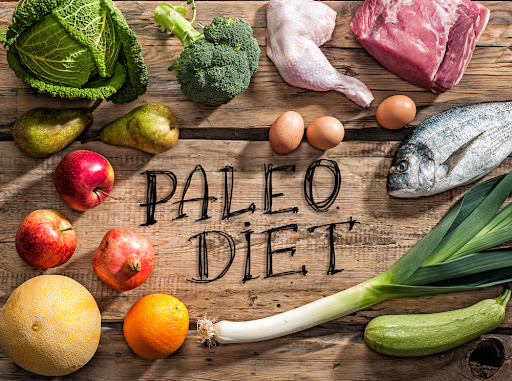
Developed by Dr. Loren Cordain, this diet underwent decades of research plus collaboration with Dr. Boyd Eaton and Dr. Staffan Lindeberg. The research done was created out of curiosity about discovering an optimal diet.
The Paleolithic diet is a hunter-gatherer type of diet. It describes a method of eating that mimics the diet of a human’s ancestral past. The diet involves eating fruits, vegetables, lean meats, eggs, fish, and some seeds and nuts.
Advantages:
- Can aid in managing blood sugar levels
- Promotes fullness and weight loss
- Reduces blood pressure
- Improves memory and brain function
- Improves skin
- Slows signs of aging
- Improves mood and sleep
- Increases energy
Disadvantages:
- Not always sustainable
- Risk of higher intakes of unhealthy/not heart-friendly fats
- Can create a nutritional deficiency
- Places people with diabetes at risk for ketoacidosis
Intermittent Fasting
This diet focuses on severely restricting food intake or eating no food for a specific number of hours every day and periods of eating larger amounts of food. The goal is to increase the body’s metabolism.
16/8 Diet
Who is it best for? Those who want rapid weight loss.

This diet involves intermittent fasting, which limits food intake and beverages containing calories to eight hours daily. For the other 16 hours, you abstain from eating. People are permitted to drink no-calorie drinks and water like tea or plain coffee.
You can do this cycle as frequently as you wish. You can do it once or twice weekly or every day, depending on your preference. The popularity of this diet has exponentially grown for those who want to burn fat and lose weight. People also believe that it improves blood sugar and can enhance longevity.
14/10 Diet
Who is it best for? Those looking for weight loss for short durations.
This one is like the 16/8 diet, except you fast for 14 hours while eating for 10.
5:2 Diet
Who is it best for? Those looking for safer, rapid, short-term weight loss.
On this diet, you eat normally five days of the week without any caloric restrictions. On the remaining two days, you reduce calorie intake to a quarter of your daily needs. For women, this is 500 calories daily, and for men, it is 600.
Advantages:
- Not a restrictive diet
- Great for those who like consuming fewer large meals
- Can promote weight loss
- Improves lipid and blood sugar levels
Disadvantages:
- Can cause some symptoms
- Not safe for people who are pregnant, breastfeeding, children, teens, those with diabetes, or those who have nutritional deficiencies
- Can lead to eating disorders and binge eating
Low Fat
These diets involve consuming foods rich in good fats, carbohydrates, proteins, and other protective items. It operates under the premise that there are 100,000 elements in these foods that contain anti-cancer, anti-aging, and anti-heart disease properties.
Ornish Diet
Who is it best for? Those looking for normal weight loss, reversing heart conditions, diabetes, and high blood pressure.
The approach for the Ornish diet focuses on experiencing a joyful life, feeling great, and not fearing death. When you are on this diet, you gain health and lose weight. Eating is pleasurable and feels good.
The diet touts that it is scientifically proven to reverse heart disease, hypercholesterolemia, type 2 diabetes, and high blood pressure. It is said to “turn on” protective genes and “turn off” those that are responsible for oxidative stress, inflammation, and oncogenes promoting cancer (prostate, colon, and breast). They also reduce aging at a cellular level.
Advantages:
- Promotes good heart health
- Helps with weight loss
- Reduces blood cholesterol
Disadvantages:
- Not sustainable as it is very restrictive
- Can cause deficiencies like omega-3 fatty acid and fat-soluble vitamins
Extremely Low-Calorie Diets
These diets severely restrict your daily caloric intake to levels most professionals feel are too dangerous. These diets do exist but should be used only with extreme caution if not avoided altogether. While they may produce short-term results, they can be very dangerous.
Human Chorionic Gonadotropin (HCG) Diet
Who is it best for? No one, really. If you are on it, it is best for very short-term weight loss.
This diet urges people to consume only 500-800 calories daily. People who engage in this diet lose weight, but only in the short term. Diets that severely restrict calories contain risks like the formation of gallstones, limited vitamin and mineral intake, irregular heartbeat, and electrolyte imbalance.
Side effects of the diet are irritability, fatigue, restlessness, fluid buildup, depression, and breast swelling in males. There is also a risk of the formation of blood clots or blocked blood vessels.
The FDA advises people to avoid all over-the-counter items containing HCG, a hormone produced during pregnancy. HCG is a prescription that treats issues with fertility. It is not approved as an over-the-counter drug and has not been proven to help you lose weight.
OPTIFAST Diet
Who is it best for? Those who want gradual, sustainable weight loss.
The OPTIFAST program has several components, including nutritional, medical, and behavioral support. It contains three phases that help people lose weight by changing their relationships with eating and food. Each person has a customized program for their individual needs.
The meal plan contains three servings of OPTIFAST daily to replace traditional meals. It provides the minimum energy amount that the body requires in addition to minerals and vitamins.
Advantages:
- Weight loss
- Can improve cholesterol and blood sugar levels
Disadvantages:
- Promotes unhealthy cravings
- Unhealthy relationship with your food
- Not suitable for diabetics
- Not sustainable
Other Diets
Vegan/Vegetarian Diet
Who is it best for? Those searching for a sustainable diet and lifestyle change.

Those who choose this lifestyle generally have a strong conviction. They are concerned about the negative impacts that eating animals has on overall health, environmental damage concerning animal foods, protecting animals, and religious beliefs. Many try to engage in this lifestyle but are uncertain how to do it or how to eliminate meat.
The different types are:
- Vegan: Plant-based products only. Eliminates poultry, meat, fish, milk, eggs, honey, cheese, leather, silk, fur, wool, cosmetics, and soap derived from animals.
- Lacto-Vegetarian: Plant-based food, milk, and mild products. Avoids poultry, meat, fish, and eggs.
- Lacto-Ovo Vegetarian: Eats plant-based food, milk products, milk, yogurt, and cheese. Avoids poultry, fish, and meat.
- Flexitarian: Consumes plant-based food, will occasionally eat or eat limited amounts of poultry, fish, and meat.
Advantages:
- Promotes increased consumption of healthy fats and fiber
- Promotes heart health and weight loss
- Environmentally responsible
Disadvantages:
- Not best for everyone
- Increased likelihood of micronutrient deficiency
Gluten-Free Diets
Who is it best for? People with Celiac disease, irritable bowel syndrome, gluten ataxia, non-celiac gluten sensitivity, and wheat allergies.
People follow this diet for many reasons that are not necessarily due to medical necessity. However, some conditions require an individual to follow a gluten-free diet.
Those with Celiac disease need to eliminate gluten from their diet. While the cause of this disease is unknown, it may be genetic. Celiac disease only affects about one percent of the population, but there has been a rise in cases over the past decade as people have learned more about it.
Celiac disease is an autoimmune condition where your immune system attacks healthy tissue in the small intestine if you consume gluten. This reaction causes inflammation due to the prolamins in specific grains (gliadin in wheat, secalin in rye, hordein in barley, and avenin in oats).
When the mucosal surface (lining) is damaged, the small intestine can’t absorb nutrients properly. This puts people at risk for deficiencies in fat, protein, iron, fat-soluble vitamins, and calcium. It may result in diarrhea, vomiting, abdominal cramps, failure to thrive, delayed growth, and osteoporosis.
Other people that may benefit from this diet are those with dermatitis herpetiformis, gluten ataxia, wheat allergy, non-celiac gluten sensitivity, and irritable bowel syndrome.
Advantages:
- Can reduce symptoms of sensitivity to gluten or Celiac disease
- Promotes consumption of less processed foods
Disadvantages:
- Restrictiveness may mean that it is difficult to sustain
- Gluten-free items are sometimes more expensive
- Can cause higher calorie consumption from gluten-free foods that are often higher in sugars and fats
- Gluten may be consumed accidentally – can be found in pharmaceuticals (binding agent), meats (extender), confectionery, flavorings, desserts, and sauces
Whole30
Who is it best for? Those looking for moderate weight loss.
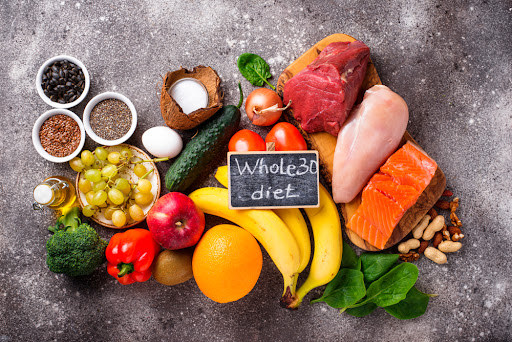
The Whole30 program contains two phases. For the first 30 days, there is an elimination of certain foods. Then, there are ten days of reintroduction. During the first month, people eat seafood, meat, eggs, fruits, vegetables, and healthy, natural fats. The eliminated foods may seem intimidating, but the program does contain 150 recipes to help people on their journey.
The list of products to avoid are:
- Added sugars: maple syrup, agave nectar, coconut sugar, monk fruit extract, date syrup, stevia, Equal, Splenda, xylitol, and NutraSweet
- Alcohol (drinking or cooking)
- Grains: rye, wheat, barley, oats, rice, corn, millet, sprouted grains, bulgur, and gluten-free cereals
- Legumes: beans, peanuts, and all soy forms (exceptions are green beans and peas)
- Dairy: cow, sheep, and goat milk, cream, kefir, cheese, yogurt, ice cream, sour cream, and frozen yogurt (exception is ghee or clarified butter)
- Sulfites or carrageenan
- Baked goods and junk food
People are discouraged from taking measurements or stepping on the scale while on the Whole30 diet. This diet is about more than just losing weight and body composition. By focusing on these areas, people miss out on the long-term benefits of this lifestyle.
Things to Consider
With the wide variety of diet plans, your overall health needs to be at the forefront. When examining each diet plan, approach it with a critical eye. The first question you should always ask is, “Is it safe?” followed by, “Is it safe for me?”
Some diet plans are best for certain medical conditions because they teach people how to avoid foods that are bad for their bodies. It teaches people how to cope with an existing illness to generate a sustainable plan for the rest of their lives.
Some diets are slow and steady. Programs like Noom and Healthi help people to lose weight, look for behavioral cues, and eat healthier. The focus is on why people eat the way they do. These programs aren’t restrictive because they believe restrictions only generate cravings. Since people will crave certain foods, they teach that avoiding them will cause a person to stumble.
Instead, they teach that any kind of food is acceptable as long as it is consumed in moderation. The focus is on a well-balanced lifestyle rather than restricting what you consume.
Then, you have your restrictive diets. While they may work initially, some people find it hard to sustain the diet over the long term. Since they don’t teach people what to do after losing weight and how to keep it off, the results are often short-lived.
While fasting methods are gaining popularity, there are some pros and cons to engaging in them. To do them effectively, you should do them moderately. Fasting should not be an ongoing lifestyle and is usually best for short-term weight loss.

Doing many of these activities long-term can lead to dangerous consequences. If you have an eating disorder or poor self-image, fasting can be dangerous. There is a higher propensity to binge eat or avoid eating altogether. This type of diet would not be healthy for teens or people in their early twenties as they can be very image-conscious.
If you choose to fast, do so safely. Generally, it is best to engage in this type of diet in conjunction with one that teaches healthy eating. Fasts should be done perhaps once a month. While some may claim that fasting boosts metabolism, this is only true for the first two to three days. After that, the body goes into starvation mode.
Diets that severely restrict calories (less than 1200 for women and 1500 for men) should be carefully examined. These diets are often unsafe and can cause severe health concerns.
Plans that restrict certain foods may be beneficial in obtaining short-term objectives, but the concern is whether they are sustainable over the long haul. Furthermore, when we restrict foods, we tend to crave them more. It follows the old adage that we want what we can’t have.
If a craving strikes, we may be more tempted to indulge just to satisfy it, which can lead to overindulgence and regret afterward. Diets that don’t restrict foods but teach moderation tend to fare better in terms of weight loss. They teach you that eating anything is permissible, just within healthy parameters.
Conclusion
When considering what diet is best for me, you need to know your body and consider any health conditions you may have. You need to ask whether you can sustain it for a lifetime or if you will be done once you achieve your goal.
Even in the absence of behavioral and environmental triggers, it is easy to regain the weight you lost because you are not dealing with the cause of the situation. Once the reason for overeating is identified, it becomes much easier to sustain weight loss.
That’s why programs like Noom and Healthi are so successful. They prepare you for after weight loss, making it a lifestyle change rather than a diet.
Sometimes successfully losing weight involves changing your mindset as well. Many of us did not learn about healthy eating. With skyrocketing costs of foods and tight budgets, it is harder to eat healthier. Processed foods are so cheap and are more budget-friendly. However, they may end up costing you your health.
What helps many people is changing the word “diet” to “lifestyle.” Losing weight and maintaining it are lifestyle changes. Good diet plans will teach you skills that you might not have had before. They will instruct you how to maintain healthy living and are much more enjoyable than following a restrictive diet.
If you want to know what diet is best for you, these are the parameters to follow: Choose one that is best for your health, helps you meet your objectives, is safe, and is sustainable. If sticking to the diet feels like a chore, it might not be the right one for you.

